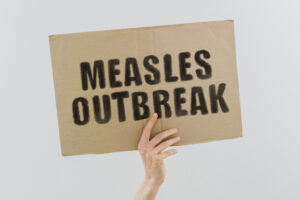In 2011, FDA, CDC and USDA’s FSIS teamed up to create the Interagency Food Safety Analytics Collaboration (IFSAC) with a goal “to improve coordination of federal food safety analytic efforts and address cross-cutting priorities for food safety data collection, analysis, and use.” IFSAC achieved a number of accomplishments in its first five years, but as anyone in business knows, one can rest on their laurels for only a very short time before the question comes back around to “What have you done for me lately?” It is no different in government, and it is likely for that very reason that IFSAC recently published its new Food Safety Analytics Strategic Plan for 2017-2021, which outlines the group’s goals, key objectives to achieve those goals, intent to continue engaging with stakeholders – and highlights its past accomplishments. As we noted in a March newsletter there was a recent call from GAO to look for ways to harmonize the food safety systems in the US. While this report is not exactly that, it is at least an effort to harmonize some priority areas around food safety research. What IFSAC Is Doing A key focus of IFSAC’s activities is foodborne illness source attribution, with projects and studies aimed at identifying foods that are important sources of human illness, and analytic efforts targeted toward four priority pathogens: Salmonella, Escherichia coli (E. coli) O157:H7, Listeria monocytogenes (Lm), and Campylobacter. Together, CDC estimates these four pathogens cause 1.9 million cases of foodborne illness in the U.S. each year. As such, the primary focus of its five-year plan is to build on its previous accomplishments by continuing to improve estimates of foodborne illness source attribution and develop methods to estimate how sources change over time. To accomplish this, IFSAC has three goals: 1. Improve the use and quality of new and existing data sources to conduct analyses and develop source attribution estimates. Existing data sources, such as foodborne illness outbreak data, are very valuable but data can be incomplete and inconsistent in reporting of certain aspects of outbreaks (e.g., contributing factors [e.g., ingredient cross contamination, improper temperature controls, etc.], specific implicated ingredients, etc.). Additionally, relevant information collected during state and local investigations may not be captured in national databases. To improve this, IFSAC intends to work with federal, state, and local partners to enhance data collection, completeness and quality and incorporate additional sources of data into analyses to improve estimates, such as regulatory sampling data and whole genome sequencing. Thus, goal objectives are to enhance the collection and quality of relevant source data; enhance the use of existing foodborne illness surveillance data sources; and incorporate genomic data and other novel data sources. 2. Improve analytic methods and models. Although new analytical methods and models have been developed to better attribute foodborne illnesses, no single data source or set of data sources was specifically designed to enable estimates of the number or proportion of illnesses attributable to each food source at the different points in the food supply chain. Improving the analytic methods and models will allow for more precise estimates, better ability to address data sparseness, and better incorporation of uncertainty. Thus, IFSAC intends to continue to seek improvement through the expansion of collaborative scientific exchanges among internal and external subject matter experts for the most accurate and timely foodborne illness source attribution estimates possible. Goal objectives are to explore ways to address key gaps in data quality, quantity, methods, and models; develop new analytic approaches and models to maximize use of already available data; and expand the availability of technical and scientific. 3. Enhance the use of and communication about IFSAC products. Foodborne illness source attribution is a complex issue, thus IFSAC sees communication of its work and findings to health practitioners, academics, advocacy groups, industry, and the public as an important element of its work. Because attribution estimates can change over time from both changes in food safety and food consumption patterns and use of new or improved data sources or methods, communication of this can be particularly challenging. Thus, IFSAC intends to build and expand relationships to better understand the needs of users of IFSAC products, enhance their usage, and enrich IFSAC communication of its findings. Goal objectives are to enhance relationships and engagement internally and externally; and improve the synthesis, interpretation, and dissemination of analytic products for multiple audiences IFSAC also stated that projects supporting implementation of the Strategic Plan will be described in an Action Plan, to be posted on the IFSAC website. My take on this is that it is always positive to see different parts of the government collaborating on food safety issues, although, as always, the issues are lack of funding and lack of time to move things forward. I was recently talking in China about the U.S. food safety system, and was struck by how our system, compared with others in the world, really is excellent. So while it is easy to be critical,, I think we have to recognize that compared with many other parts of the world our public health officials at CDC, FDA and FSIS as well as at the state and local levels, really do a great job at tracking and reacting to food safety issues. But we should always be looking to do more, because there is always more to do. About The Acheson Group (TAG) Led by Former FDA Associate Commissioner for Foods Dr. David Acheson, TAG is a food safety consulting group that provides guidance and expertise worldwide for companies throughout the food supply chain. With in-depth industry knowledge combined with real-world experience, TAG’s team of food safety experts help companies more effectively mitigate risk, improve operational efficiencies, and ensure regulatory and standards compliance. www.AchesonGroup.com





